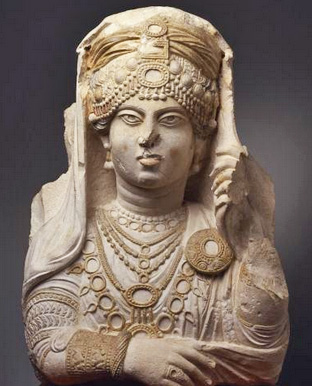Trying to avoid an eternal fashion faux pas? Worried that your fellow citizens of Palmyra are outdressing you? If designing your funeral bust is causing you more stress than the idea of death itself, you’ve come to the right place.
Disclaimer: if you don’t belong to an upper class family of Palmyra, this article isn’t for you. You need a family member who works as a priest, caravan owner, municipal official, or military commander to afford one of these busts. But if you have the financial means, keep reading!
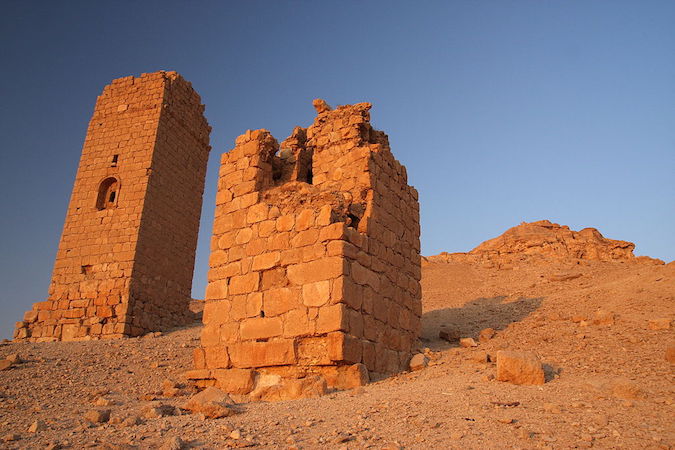
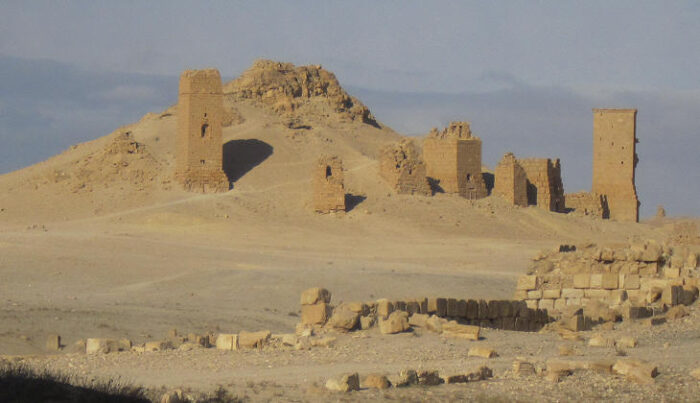

The Basics of Your Bust
Your bust will be carved in high relief from a slab of limestone, usually depicting you alone. However, you could always pose with another family member for a more unique look. You’ll want an inscription above your shoulder naming your paternal lineage for 2-3 generations back – how else would you get street cred for being part of an elite family? If you’re feeling adventurous, add the year of your death. Since Palmyra flourished between the first and third centuries CE, it’ll be somewhere in that range.


The key to nailing Palmyran fashion lies in your ability to combine aspects of multiple cultures. Palmyra sits in the center of the caravan trade between the Roman empire and Eastern cultures. Residents are ethnically diverse, hailing from Greece, Persia, Aramea, and Arabia; people also observe a variety of religions, including Zoroastrianism, Judaism, Christianity, and a cult dedicated to the Persian god Bel. So flaunt that diversity when choosing your outfit!

Designing Your Look
Depending on when you die, different eras boast of different trends. Scholars have arbitrarily divided the Palmyra’s busts into 3 periods based on stylistic similarities: Period 1 (50-150 CE), Period 2 (150-200 CE), and Period 3 (200-273 CE).
Scholars often label Palmyran art as either “Eastern” or “Western”. Henri Seyrig argues that its art was more Eastern in character than Roman. Abby Hanson explores this scholarly tendency to create binaries in her post about the Apadana. She summarizes the debate over whether the Persians copied the architecture of the Parthenon, or whether the Greeks copied the Persian Apadana. These debates indicate a human urge to categorize. So as I describe fashion trends below, remember that many busts don’t fit within one clean-cut category. Even the time periods they “belong to” are subjective.
That being said, if you’re expecting to die during Period 1, keep your look simple. Palmyra’s trade routes are not expansive at this point, so Greco-Roman trends exert the strongest influence over fashion. Try out a Grecian-style veil to cover your head, and style your hair in wavy locks! If you’re a woman, hold a spindle and distaff in your left hand to indicate your prowess as a wife. Necklaces and bracelets are a no-no at this point, but a tiara and pair of earrings are perfect accessories.

If you’re a man in Period 1, show what you contributed to society by holding a symbolic object! A book roll indicates literacy or citizenship, and a whip to manage camels means involvement with the caravan trade. If you’re a priest, make sure you’re depicted wearing your tall, cylindrical hat. The Roman-inspired pose, in which your right hand hangs enveloped in the folds of your tunic, is a classic. So manly.
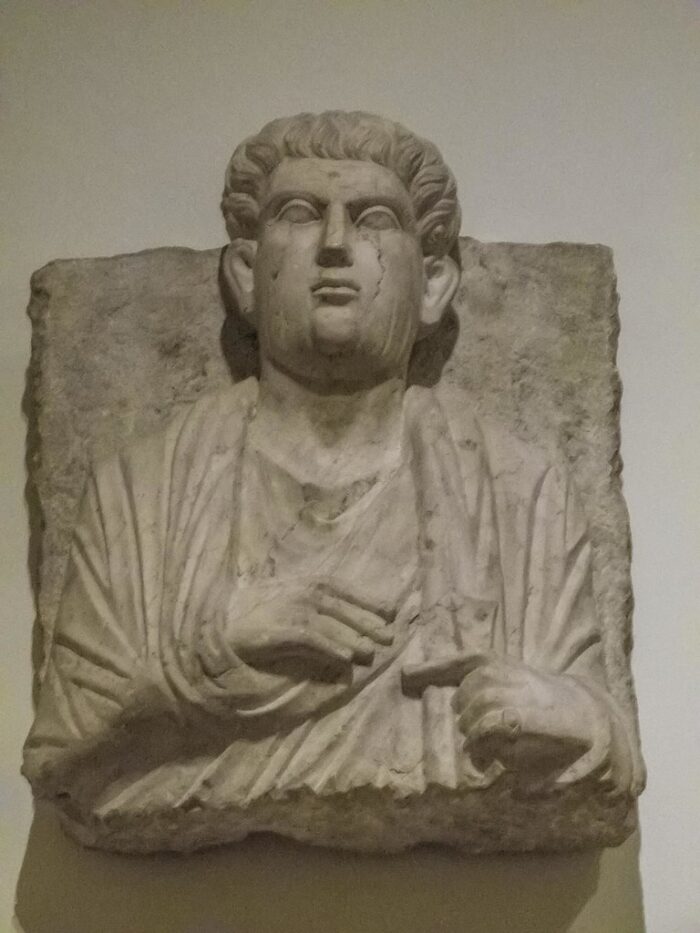
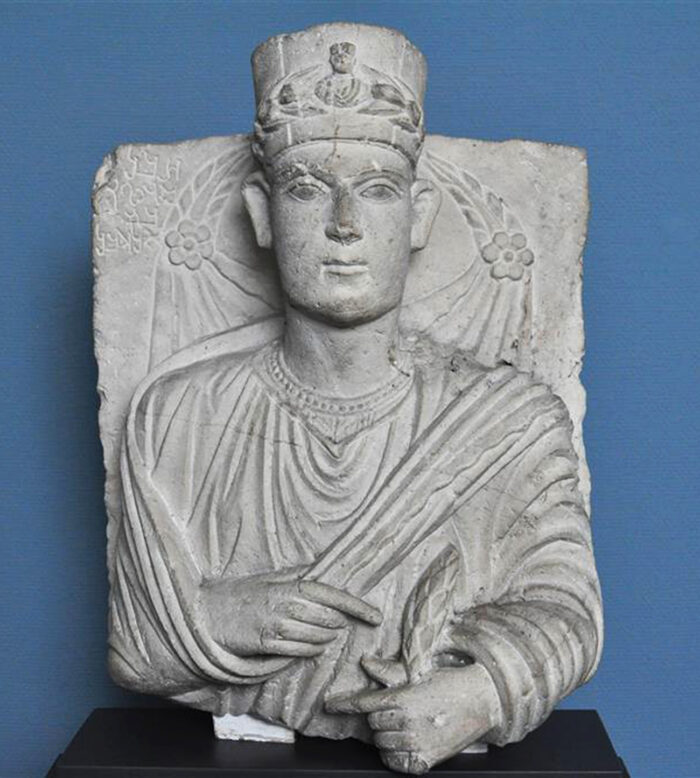
If you die during Period 2, fashion gets a little more varied! During this era, Palmyra’s trade routes expand East, so trends from India and China begin to gain popularity as merchants bring items back from Asia. Many residents still cling onto the traditional Greco-Roman styles, such as tiaras or holding a spindle and distaff. Loving the Eastern influence? Add bold layered necklaces or thick bracelets made of coiled wire to your look. Crotalia earrings, a style of dangling pearls hanging from a crossbar, are also all the rage.

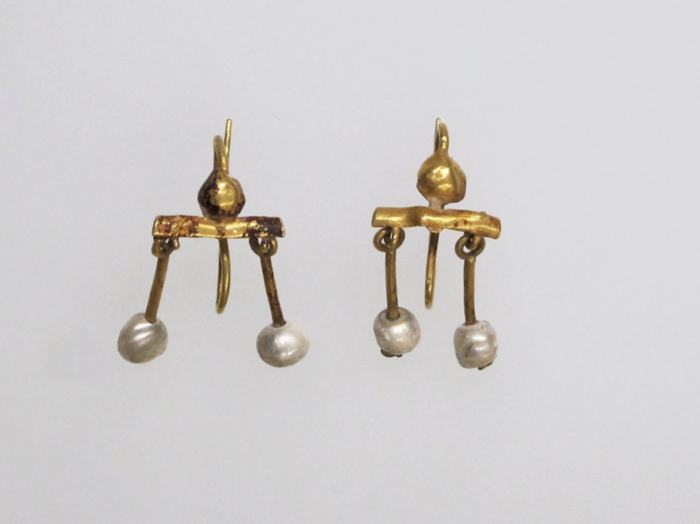
If you love accessorizing, Period 3 is a great time to die! By this point, Palmyra has established frequent trade with the East, such as India and Parthia. Embroidering jewels onto the fabric of garments is all the rage. Although Eastern silhouettes are now trendy, the patterns of these clothes still contain Greek motifs like lilies and wave borders. As for jewelry, more is more. Layer several small pearl or beaded necklaces with a statement amulet necklace. Add some anklets or engraved cuff bracelets. Sadly, the spindle and distaff are very last-season – but if you want to communicate your purity, pose with your hand raised to your veil or chin!
As for the men, your trends don’t fluctuate as much. Keep it classic by holding your objects of choice – sadly, the accessorizing is much more popular with the ladies.
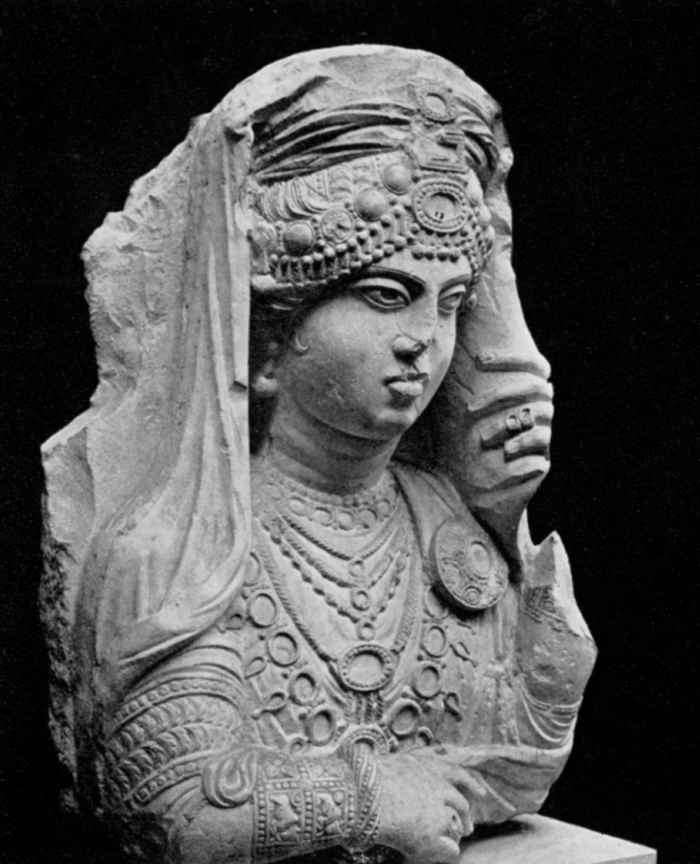
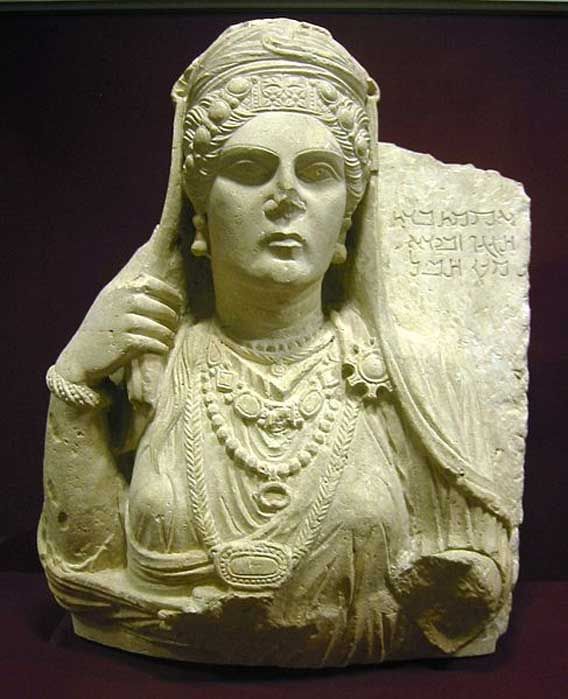
And there you have it! These tips guarantee a tasteful bust for whenever you die. Just don’t feel pressure to categorize your style as fully “Eastern” or “Western”. Classifying these funerary busts, or the city as Palmyra as a whole, as “Eastern” or “Western” oversimplifies its culture. In reality, Palmyra’s fusion of design elements created a unique culture of its own.
About the Author
Helen Lieberman is a sophomore from Newfields, NH. She grew up with an interest in fashion and design, so she found learning about Palmyran dress and what it reveals about the city fascinating.
